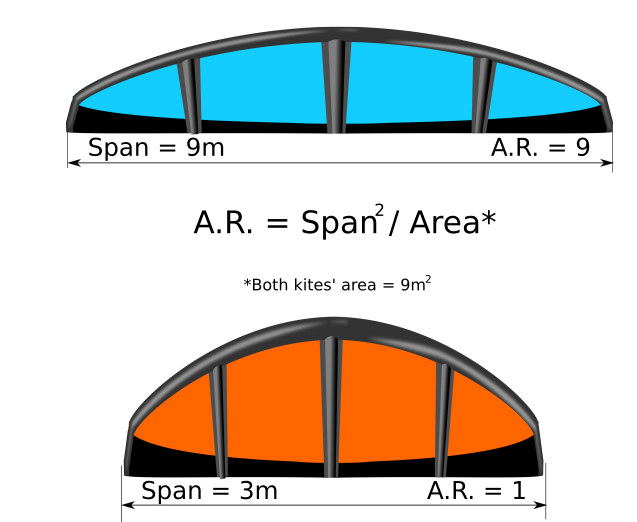Try the new IKO website at https://beta.ikointl.com/

High Aspect Ratio (AR) vs Medium AR vs Low AR Kites - What's the difference and who cares?

With the kiteboarding world growing you begin to see various kite shapes out on the water. Some thin and long, others wider and shorter.
Why are certain kite models certain one way and others another? What is the norm?
Lets begin with what aspect ratio is. The proportion between the surface area (A) of the kite and its span (S) is called the aspect ratio. You can calculate the kite’s Aspect Ratio by measuring the span of the kite and then dividing the square of the span (in meters) by the kite’s area (in square meters).
An easy way to estimate the AR is; the more square the kite is, the smaller AR is. The more rectangular, the higher AR will be. Aspect ratio can be used to estimate the aerodynamic performance of a kite.
Lets break up the varieties and characteristics.
High aspect kites: long and thin.
Immediately less powerful, though generate more power per square meter when moving.
Fly faster, great upwind performance, more lift, glide and float.
Slower turning and less depower at the bar when powered up.
Harder to relaunch.
High aspect kites are generally race and big air kites.
Low aspect kites: short and wide.
Turn quickly, though have less less lift and float than high aspect kites.
More depower at the bar.
More stable in gusty winds and drift down wind well.
Easier to relaunch.
Low aspect kites are generally wave and learner kites.
Medium aspect kites:
People do not generally refer to kites as having medium aspect though they are out there. Generally an all in one kite that doesn't excel in one specific feature but is pretty good at all off them would be medium aspect.
Medium Aspect kites are generally freestyle and freeride kites.
After reading this information - let us know what kind of kite you are flying-
IKO
.png)

